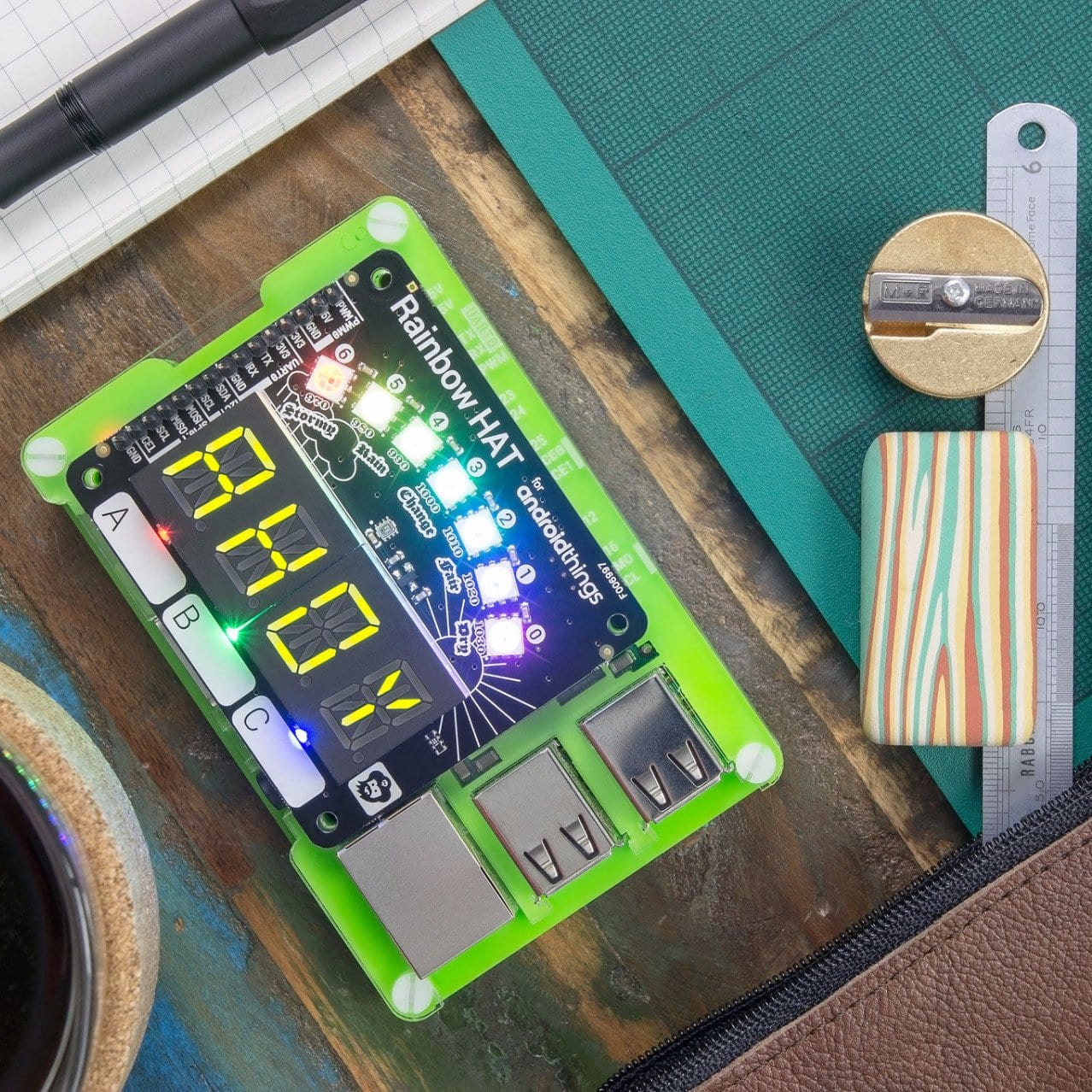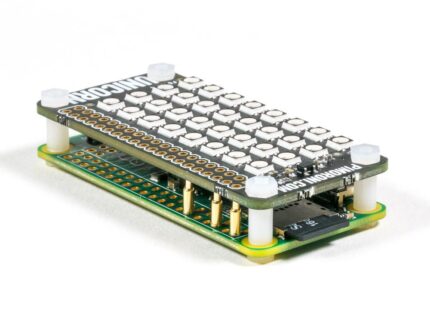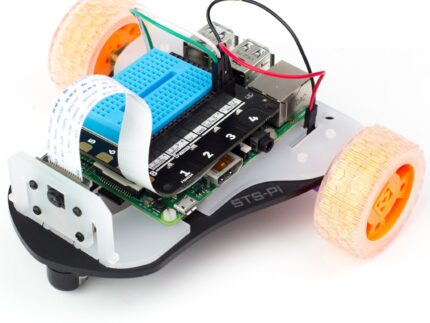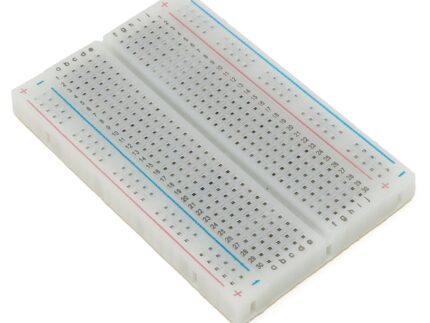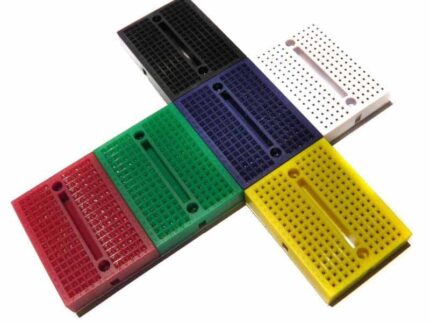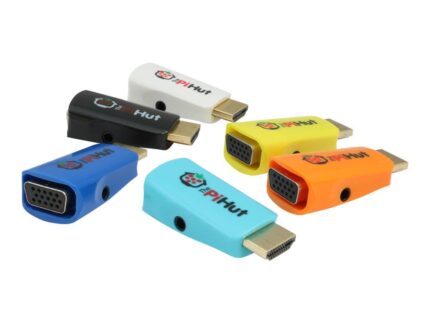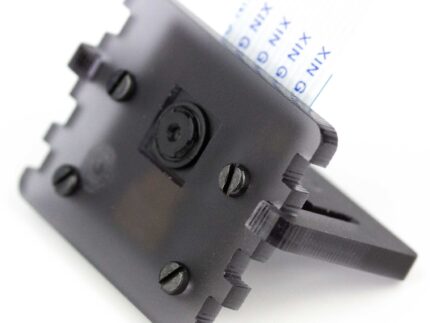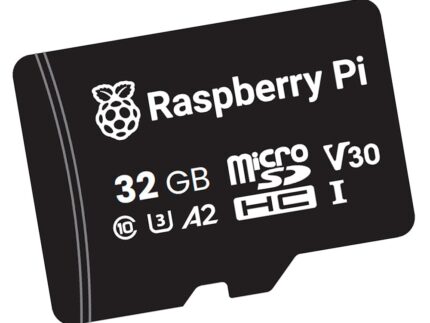Rainbow HAT
Rainbow HAT has a buffet of sensors, inputs and displays to explore Android ThingsTM. Use it as a weather station, a clock, a timer or stopwatch, a mood light, or endless other things.
We’ve worked with the Android Things team at Google to create this great add-on board that features displays, sensors, sound, and lots of LEDs! It’s the perfect introduction to developing Android Things applications on the Raspberry Pi.
Rainbow HAT also has a full Python API for use on Raspbian just like all of our other HATs that you know and love!
The MagPi said that “Rainbow HAT has an impressive number of features crammed into it, making it useful for all sorts of projects” in their four star review.
Rainbow HAT features:
- Seven APA102 multicolour LEDs
- Four 14-segment alphanumeric displays (green LEDs)
- HT16K33 display driver chip
- Three capacitive touch buttons
- Atmel QT1070 capacitive touch driver chip
- Blue, green and red LEDs
- BMP280 temperature and pressure sensor
- Piezo buzzer
- Breakout pins for servo, I2C, SPI, and UART (all 3v3)
- Rainbow HAT pinout
- Compatible with Raspberry Pi 3, 2, B+, A+, Zero, and Zero W
- Python library
The board is designed specifically to show off the wide range of protocols available on the Raspberry Pi, including SPI (the APA102 LEDs), I2C (the BMP280 sensor and 14-segment displays), GPIO (the capacitive touch buttons and LEDs), and PWM (the piezo buzzer).
Note that the SPI labels are reversed on Rainbow HATs from 2017 and earlier. From top to bottom, they should be CE1, SCL, MISO, MOSI.
Raspberry Pi 3 Starter Kit for Android ThingsTM contains:
- Raspberry Pi 3
- Rainbow HAT
- Pibow Coupé for Android Things
- 2.5A official Raspberry Pi worldwide power supply
- 16GB microSD card
Using Android Things?
For information on how to get started with Android Things and Rainbow HAT visit the official developer site for Android Things.
To put the latest Android Things image on your SD card, see the instructions here: https://developer.android.com/things/hardware/raspberrypi.html.
You can find the driver and samples published in the official GitHub organisation: https://github.com/androidthings
Using Raspbian?
We’ve also put together a Python library to make it a breeze to use. You can find it here: https://github.com/pimoroni/rainbow-hat
Our software does not support Raspbian Wheezy.
Notes
Temperature readings are affected by heat radiated from your Pi’s CPU and the onboard LEDs; calibration can help to correct temperature readings. bstrobl, on the Raspberry Pi forums, suggests to use the formula: corrected temp. = measured temp. – (CPU temp. – measured temp.) / 2. Using a Mini Black HAT Hack3r can also help.
